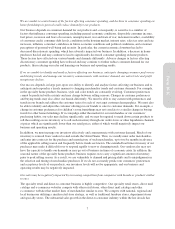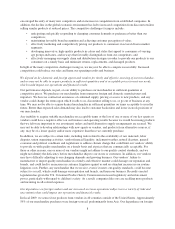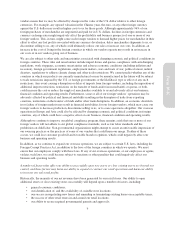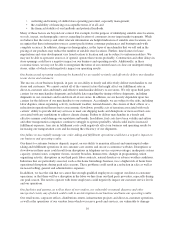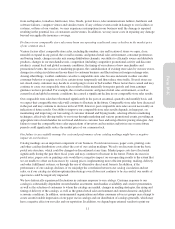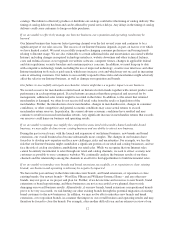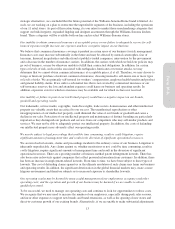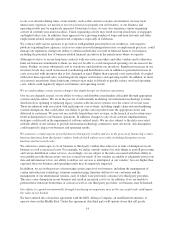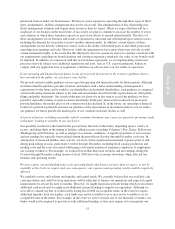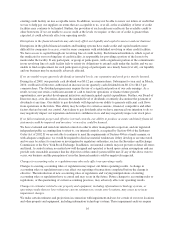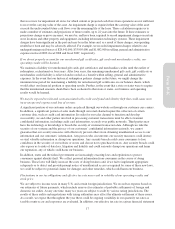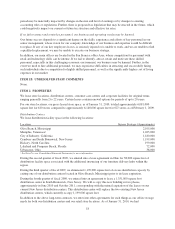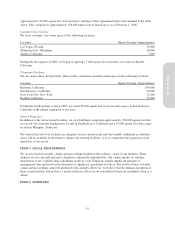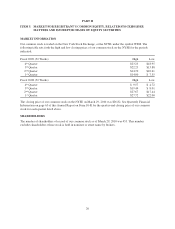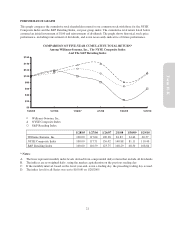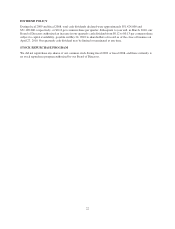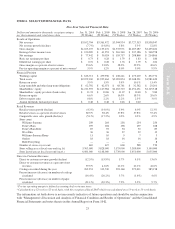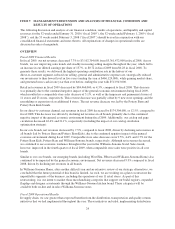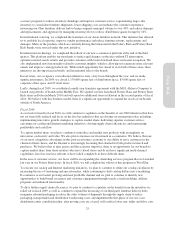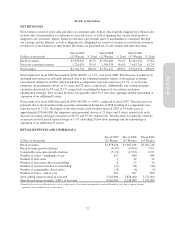Pottery Barn 2009 Annual Report Download - page 29
Download and view the complete annual report
Please find page 29 of the 2009 Pottery Barn annual report below. You can navigate through the pages in the report by either clicking on the pages listed below, or by using the keyword search tool below to find specific information within the annual report.
that we review for impairment all stores for which current or projected cash flows from operations are not sufficient
to recover the carrying value of the asset. An impairment charge is required when the carrying value of the asset
exceeds the undiscounted future cash flows over the remaining life of the lease. These calculations require us to
make a number of estimates and projections of future results, up to 22 years into the future. If these estimates or
projections change or prove incorrect, we may be, and have been, required to record impairment charges on certain
store locations and other property and equipment, including information technology systems. These impairment
charges have been significant in the past and may be in the future and, as a result of these charges, our operating
results have been and may be adversely affected. For example, we recorded impairment charges related to our
underperforming retail stores of $28,941,000, $33,995,000 and $1,082,000 in selling, general and administrative
expenses in fiscal 2009, fiscal 2008 and fiscal 2007, respectively.
If we do not properly account for our unredeemed gift certificates, gift cards and merchandise credits, our
operating results will be harmed.
We maintain a liability for unredeemed gift cards, gift certificates and merchandise credits until the earlier of
redemption, escheatment or four years. After four years, the remaining unredeemed gift cards, gift certificate or
merchandise credit liability is relieved and recorded as a benefit within selling, general and administrative
expenses. In the event that our historical redemption patterns change in the future, we might change the
minimum time period for maintaining a liability for unredeemed gift certificates on our balance sheets, which
would affect our financial position or operating results. Further, in the event that a state or states were to require
that the unredeemed amounts should have been escheated to that state or states, our business and operating
results would be harmed.
We may be exposed to risks and costs associated with credit card fraud and identity theft that could cause us to
incur unexpected expenses and loss of revenue.
A significant portion of our customer orders are placed through our website or through our customer care centers.
In addition, a significant portion of sales made through our retail channel require the collection of certain
customer data, such as credit card information. In order for our sales channel to function and develop
successfully, we and other parties involved in processing customer transactions must be able to transmit
confidential information, including credit card information, securely over public networks. Third parties may
have the technology or knowledge to breach the security of customer transaction data. Although we take the
security of our systems and the privacy of our customers’ confidential information seriously, we cannot
guarantee that our security measures will effectively prevent others from obtaining unauthorized access to our
information and our customers’ information. Any person who circumvents our security measures could destroy
or steal valuable information or disrupt our operations. Any security breach could cause consumers to lose
confidence in the security of our website or stores and choose not to purchase from us. Any security breach could
also expose us to risks of data loss, litigation and liability and could seriously disrupt our operations and harm
our reputation, any of which could harm our business.
In addition, states and the federal government are increasingly enacting laws and regulations to protect
consumers against identity theft. We collect personal information from consumers in the course of doing
business. These laws will likely increase the costs of doing business and, if we fail to implement appropriate
safeguards or to detect and provide prompt notice of unauthorized access as required by some of these new laws,
we could be subject to potential claims for damages and other remedies, which could harm our business.
Fluctuations in our tax obligations and effective tax rate may result in volatility of our operating results and
stock price.
We are subject to income taxes in many U.S. and certain foreign jurisdictions. We record tax expense based on
our estimates of future payments, which include reserves for estimates of probable settlements of foreign and
domestic tax audits. At any one time, many tax years are subject to audit by various taxing jurisdictions. The
results of these audits and negotiations with taxing authorities may affect the ultimate settlement of these issues.
As a result, we expect that throughout the year there could be ongoing variability in our quarterly tax rates as
taxable events occur and exposures are evaluated. In addition, our effective tax rate in a given financial statement
17
Form 10-K


